Tower of London poppies: Thousands to go on tour
- Published
David Cameron visited the poppies at the Tower of London with his wife Samantha
Thousands of the Tower of London ceramic poppies are to tour the UK to enable more people to see parts of the popular artwork.
The installation of the 888,246 poppies will start to be dismantled by a team of about 8,000 volunteers on Wednesday.
The weeping window and wave segments will be removed last and will be on show until the end of the month.
The tour will last until 2018 before being permanently based at the Imperial War Museums in London and Manchester.
No schedule has been set yet for the tour, to be organised by 14-18 NOW.
The announcement comes as services were held to honour members of the armed forces killed in conflict.
At the Tower of London, crowds bowed their heads to remember the country's fallen during a two minute silence.
Among the crowds was Bradley White, 28, from Essex, who joined the Army at 16 and served in both Iraq and Afghanistan where he was shot in the left leg during an ambush.
"I saw the poppies a few weeks ago. Seeing it all finished now just shows the scale of the sacrifice," he said.
"It is quite emotional when you look at the sheer scale of it. When we were out in Afghanistan we lost nine soldiers, and numerous more since. So, it does bring back poignant memories from when we were out there."
At the Cenotaph, the Queen was joined by political leaders and veterans for a ceremony.

Tributes were placed on a fence near the installation on Sunday
'Much loved'
Huge demand from the public sparked a campaign to keep the installation in place longer.
Floodlights are already being used to ensure more people get to see the piece created to mark the centenary of the start of World War One.
Each poppy represents each British and Commonwealth death during WW1.
The Wave is a steel construction made of poppies surrounding the entrance to the Tower of London while the Weeping Window depicts poppies falling from a window on the top floor of the Tower.
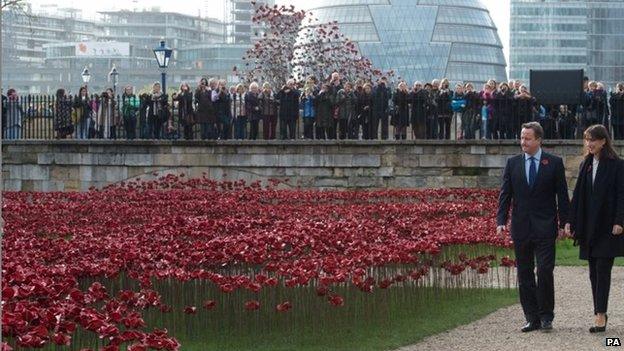
The prime minister praised the initiative to tour certain parts of the display around the country
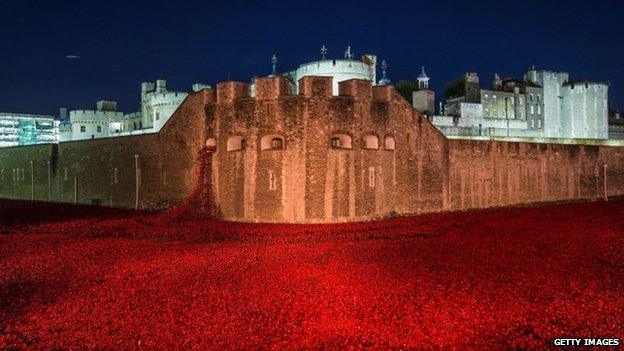
Floodlights are already being used to ensure more people get to see the piece
Both were made by the Theatre Royal in Plymouth, whose chief executive said: "So many more people will have the opportunity to see this wonderful and moving piece of art."
The prime minister said the display had "in a very short space of time become a much loved and respected monument".
Up to four million people are expected to have visited before 12 November.
Entitled Blood Swept Lands And Seas Of Red, external, the installation is the work of ceramic artist Paul Cummins, from Derbyshire.
Mr Cameron also said the government wanted to ensure as many people as possible had the opportunity to view the poppies.
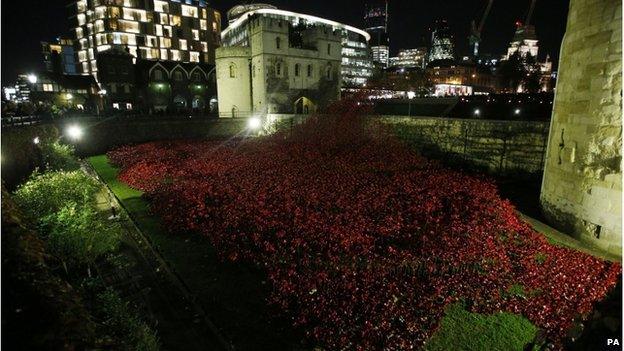
Floodlights are being used to illuminate the display after sunset
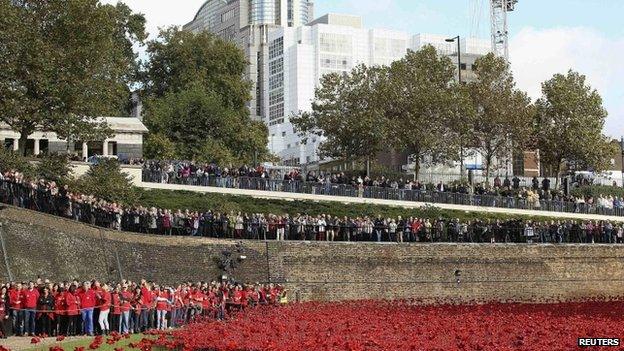
Millions of people have come to see the ceramic poppies before they are dismantled
"By displaying parts of the installation around the country and then permanently in the Imperial War Museum, we have ensured that this poignant memorial will be saved for the nation," he added.
The Royal British Legion has said it hopes the sale of the poppies, after the installation has been dismantled, will raise in excess of £15m.
All net proceeds plus 10% of every £25 poppy sold will be shared between six service charities, including Help for Heroes and the Royal British Legion.
Chancellor George Osborne has previously agreed to waive the £1.1m VAT from the poppy sales, also using money from Libor fines.

The Queen and Duke of Edinburgh have also visited the installation
"It's only right that fines from those who have demonstrated the very worst of values should go to support those who have shown the best of British values," he said.
Culture Secretary Sajid Javid, who leads the government's programme to mark the centenary of WW1, said: "The poppies at the Tower are a stunning memorial to those who died in the First World War.
"For me this is public art at its most powerful and moving."
The tour of the poppies is being supported by donations from two charities, the Backstage Trust and the Clore Duffield Foundation, together with government funding.
More than £500,000 is being paid by the government to cover the cost of storing, transporting and installing the poppy sculptures in towns and cities across the UK. The funding will come from fines accrued from the Libor banking scandal.

World War One Centenary
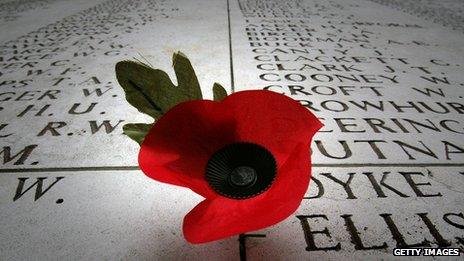

- Published9 November 2014
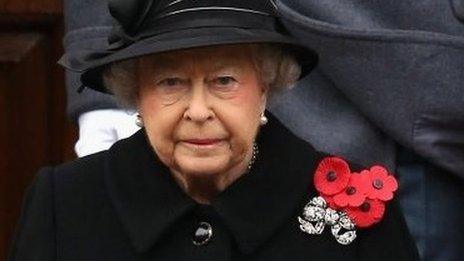
- Published8 November 2014

- Published7 November 2014
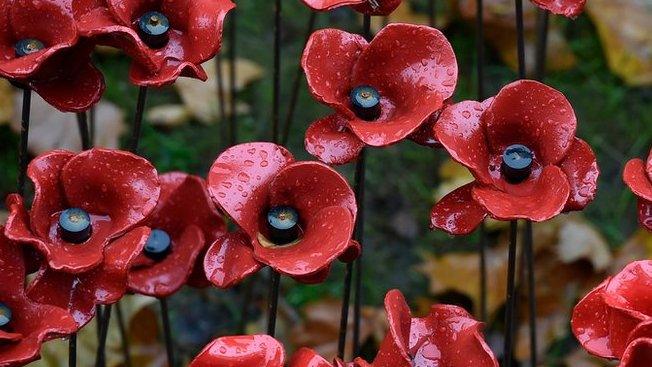
- Published6 November 2014
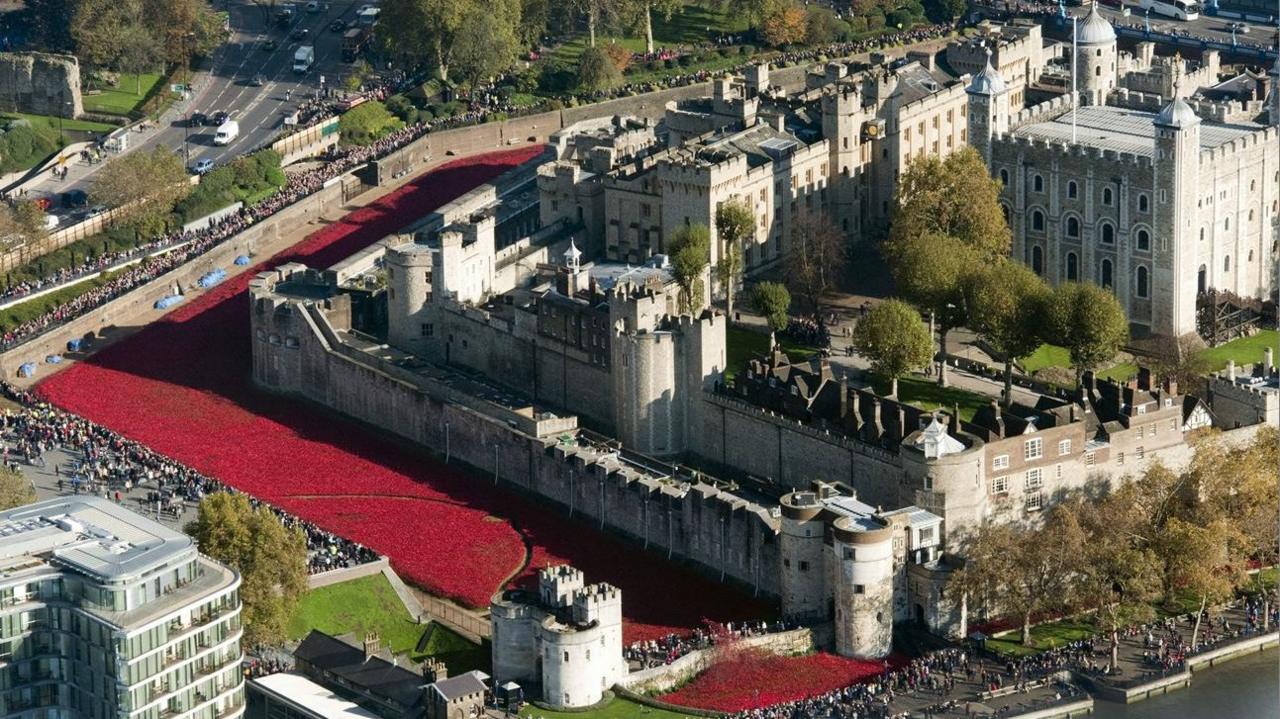
- Published5 August 2014
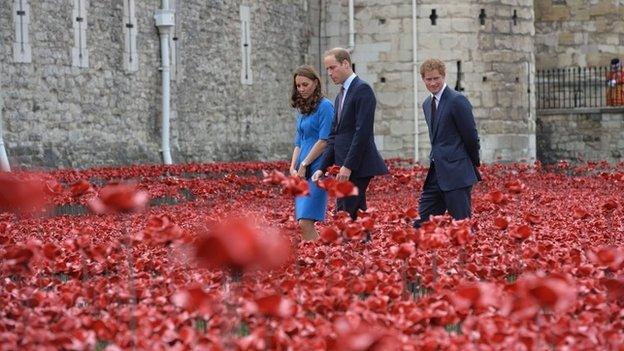
- Published31 October 2014
